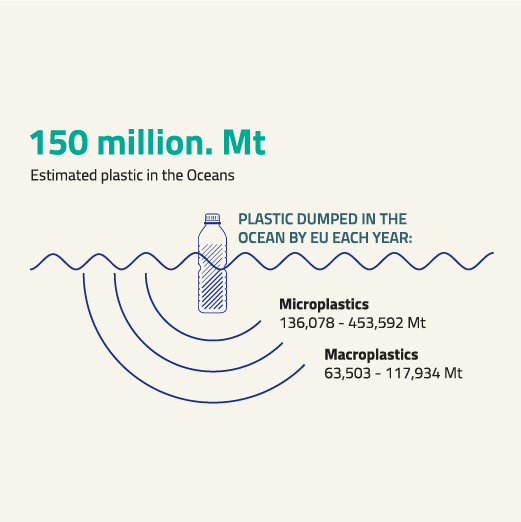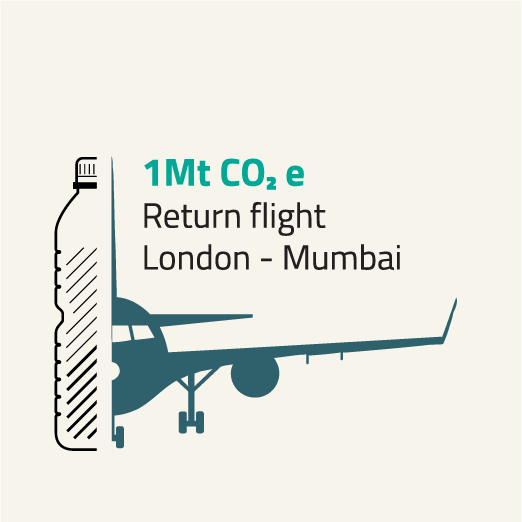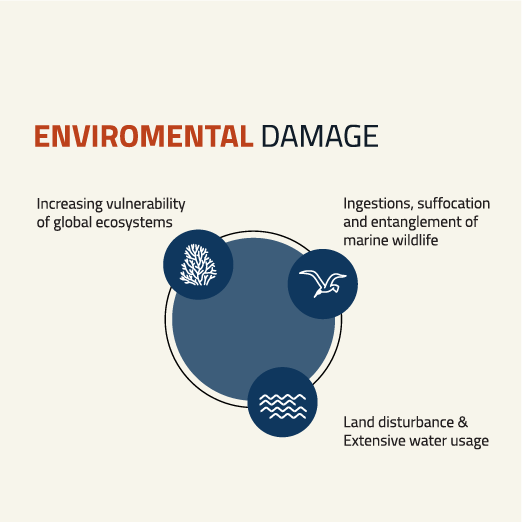GHG in the Plastic Value Chain
Client
Climate-KIC
Country
The Netherlands
Work
System Design
Data Visualisation
Editorial Design
Plastic is a revolutionary material that shaped the last centuries' consumption habits and still leaves a permanent trace on our planet. The first created plastics were praised for their unique properties. Nevertheless, mass production of plastics and its use for the manufacturing of low-quality products led to flooding the global markets with cheap disposable products that have gradually flooded the planet.
In 2020 Irene Hofmeijer asked Unbeaten Studio to design a clear system overview of the greenhouse gas emissions from the entire plastic value chain. GHG from the plastic lifecycle could eat up 10-13% global carbon budget. The ongoing environmental impact is enormous; for example, plastics in the oceans may interfere with ocean C absorption. It is essential to understand the devastating effects in the different steps in the value chain, so we can act by making our lives and businesses less dependent on plastics.
The steps in the value chain include:
Fossil fuel extraction & transport: emissions from methane leaking and flaring, fuel combustion and E consumption of drilling oil or gas. Land disturbance.
Production & manufacturing: most GHG intensive: cracking of alkanes to olefin, polymerisation and plasticisation of olefins into plastic resins, other chemical refining processes – extremely high E requirement – high emissions profile from direct GHG emissions.
Disposal: recycled, landfill, incinerated, lost to the environment.
“Olefin, also called alkene, compound made up of hydrogen and carbon that contains one or more pairs of carbon atoms linked by a double bond. Olefins are examples of unsaturated hydrocarbons (compounds that contain only hydrogen and carbon and at least one double or triple bond).”
The Design
The global value chain of plastics is very complex; it is hard to paint an accurate picture of its GHG and impact on the climate. With the design of the value chain, we wanted to show this complexity. As a designer, you always aim to make things as simple as possible, but in this case, we left something to search for to enhance the fact it is a very complex problem.
The design of the visualisation is based around the earth. The starting point is the extraction of raw materials and ideally should then start a clean cycle of production, use and re-use. The problem with plastic this is not happening. 40% of plastics are single-use, and 40% of the total plastic used is a direct waste. By understanding the impact, we can do something about this. Part of the visualisations shows an overview of projects and start-ups that Climate-KIC has supported to fight the plastic war.
Together with Irene Hofmeijer and Lisa Schumacher from Climate-Kic, we not only created a system overview to signal an urgent need for a change of the plastics value chain. We also created an overview of all the start-ups Climate-Kic supports that work on reducing GHG emissions in the chain.
Download the infographic
Life-Centered Design
One of the critical principles of Life-Centered design is understanding the impact we have as humans on the ecosystems on our planet. This project is a prime example of making our impact visual. If we know the damage, we do we can start changing our behaviour. Click below to learn more!










